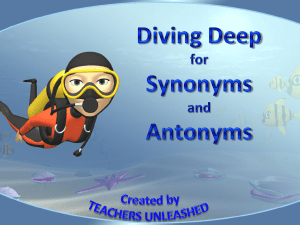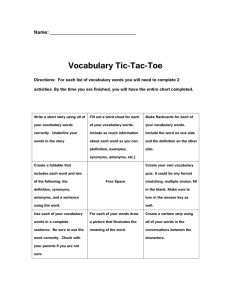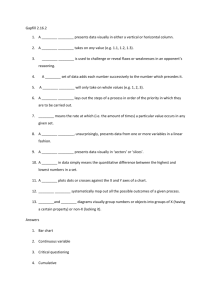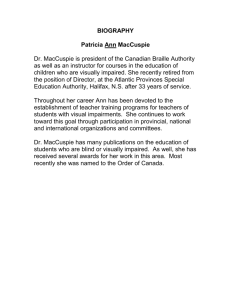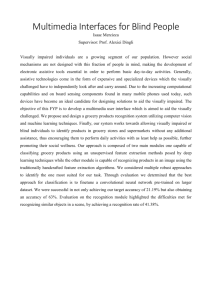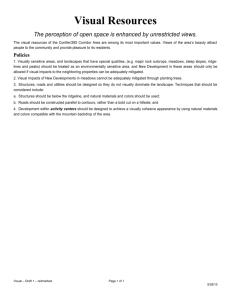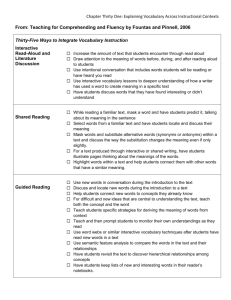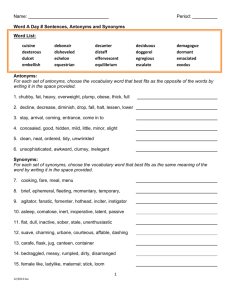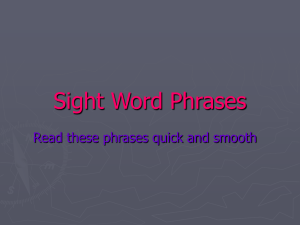Language Arts "CAN DO" Descriptors 6-8
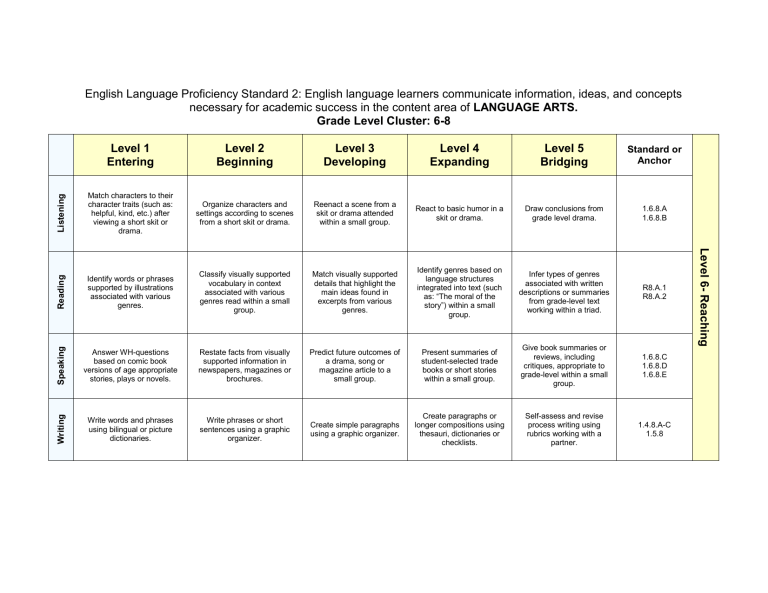
English Language Proficiency Standard 2: English language learners communicate information, ideas, and concepts necessary for academic success in the content area of LANGUAGE ARTS.
Grade Level Cluster: 6-8
Level 1
Entering
Level 2
Beginning
Level 3
Developing
Level 4
Expanding
Level 5
Bridging
Standard or
Anchor
Match characters to their character traits (such as: helpful, kind, etc.) after viewing a short skit or drama.
Organize characters and settings according to scenes from a short skit or drama.
Reenact a scene from a skit or drama attended within a small group.
React to basic humor in a skit or drama.
Draw conclusions from grade level drama.
1.6.8.A
1.6.8.B
Identify words or phrases supported by illustrations associated with various genres.
Classify visually supported vocabulary in context associated with various genres read within a small group.
Match visually supported details that highlight the main ideas found in excerpts from various genres.
Identify genres based on language structures integrated into text (such as: “The moral of the story”) within a small group.
Infer types of genres associated with written descriptions or summaries from grade-level text working within a triad.
Answer WH-questions based on comic book versions of age appropriate stories, plays or novels.
Restate facts from visually supported information in newspapers, magazines or brochures.
Predict future outcomes of a drama, song or magazine article to a small group.
Present summaries of student-selected trade books or short stories within a small group.
Give book summaries or reviews, including critiques, appropriate to grade-level within a small group.
Write words and phrases using bilingual or picture dictionaries.
Write phrases or short sentences using a graphic organizer.
Create simple paragraphs using a graphic organizer.
Create paragraphs or longer compositions using thesauri, dictionaries or checklists.
Self-assess and revise process writing using rubrics working with a partner.
R8.A.1
R8.A.2
1.6.8.C
1.6.8.D
1.6.8.E
1.4.8.A-C
1.5.8
Summative Framework
English Language Proficiency Standard 2: English language learners communicate information, ideas, and concepts necessary for academic success in the content area of
Language Arts
.
Grade Level Cluster: 6-8
Example
Topics
Level 1
Entering
Level 2
Beginning
Level 3
Developing
Level 4
Expanding
Level 5
Bridging
Literary devices
Identify words and phrases related to different time frames following oral directions with visual support (e.g.,
“before,” “during,”
“after”)
Match oral phrases or sentences supported visually with different time frames ( e.g., “long ago, ” “right now,” “in the future.”)
Identify use of literary devices related to different time frames in visually supported discourse (e.g., foreshadowing or flashback)
Analyze use of literary devices related to different time frames in visually supported oral passages
Interpret use of literary devices related to different time frames presented orally from grade level text
Biographies Answer WH- or choice questions from pictures related to biographies (e.g.,
“Is he an old man or a young man?”)
Describe pictures or timelines related to biographies
State biographical information based on timelines or other graphic organizers
Summarize points from outlines or graphic organizers on biographies
Assume character roles using notes on grade level biographies
Summative Framework
English Language Proficiency Standard 2: English language learners communicate information, ideas, and concepts necessary for academic success in the content area of
Language Arts
.
Grade Level Cluster: 6-8
Example
Topics
Level 1
Entering
Level 2
Beginning
Level 3
Developing
Level 4
Expanding
Level 5
Bridging
Identify figures of speech and match to their meanings in visually supported text
Interpret figures of speech in grade level text
Figures of speech
(alliteration, metaphors, personification, similes)
Respond to literal questions that involve figures of speech from visually supported phrases (e.g.,
”Where is the buzzing bee ?”)
Synonyms, antonyms, homophones
Identify words or phrases representing figures of speech in visually supported related sentences
(e.g., like or as)
Categorize or classify figures of speech in visually supported passages
Match familiar symbols, words, or phrases with antonyms from word banks and visuals
Describe familiar people, places, events in phrases or sentences with synonyms or antonyms using word banks and visuals
Rewrite visually supported paragraphs using synonyms or antonyms to change context or purpose of communication
(e.g., switch positive with negative trait)
Produce original ideas that incorporate synonyms, antonyms, or homophones from visually supported material
Create stories or essays that include synonyms, antonyms, or homophones
